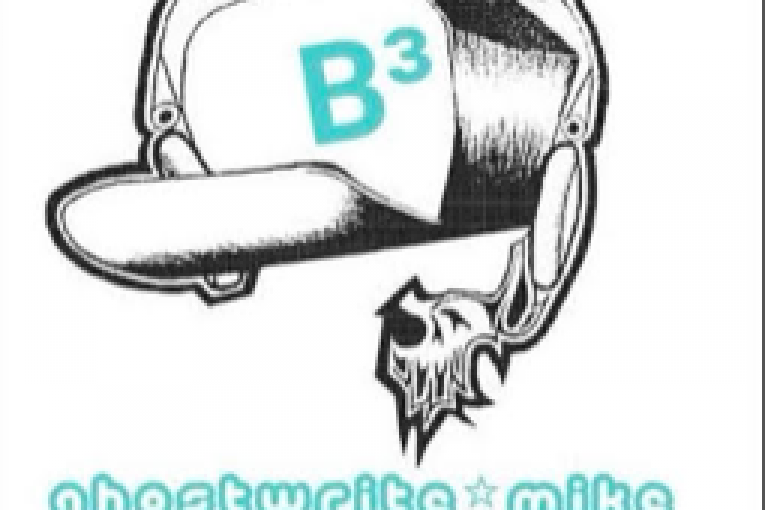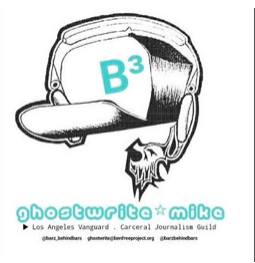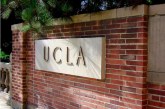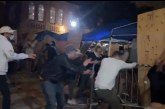

By Ghostwrite Mike and The Mundo Press
CHOWCHILLA, CA – “Voiceless, marginalized and disenfranchised” are among the common refrains that come from those surviving the carceral state, particularly those who are creative advocates who illustrate feeling unheard, unseen, and powerless through their artistic perspectives and substantive narratives that describe what it is like to be confined in our society.
We recently conducted a roundtable interview discussing the obstacles and opportunities of being incarcerated with five of Valley State Prison’s (VSP) residents.
Pen names and monikers are employed to describe the identities of these individuals, who are dually the names they use externally as published poets, artists, and musicians that have come out of the Barz Behind Bars (B³) creative arts workshop.
B3 is a program that uses The Art of Recovery Therapy (ART) space by creating an arts and humanities-focused activity space at VSP in which incarcerated people have the ability to participate directly and help facilitate.
“Last Jedi Left,” considered a “youth offender” – the dehumanizing term created by the California legislature to classify those who have committed a felony before the age of 26 – is serving a life without the possibility of parole (LWOP), an indeterminate sentence without a release date.
He told us, “At San Quentin Rehabilitation Center, residents enjoy film production, audio podcasting, multiple print magazines, a newspaper and endless live event occasions that amplify creativity and build community.”
Continuing, he said, “That’s what we need here at VSP – an immediate therapeutic stream of social benefits of the arts that is well-settled. Our B³ cohort has four years of momentum, internal buy-in from over seven-hundred waitlisted participants and external support from multiple nonprofits, universities, and journalism outlets.”
“To achieve this, we need local public agency administrative support,” he added, noting, “I won’t ever be released, but the arts allow us to constructively shape our community by centering our life lessons and that can help our younger peers learn from our mistakes. We can use the arts to be of service.”
“Imprint Do’s,” a youth offender serving multiple indeterminate life terms, described his own experience with art and media during his imprisonment. “Nearly 10 years ago, several of us were housed together at Pleasant Valley State Prison, a high-security facility, and worked under the supervision of a psychologist.
“(We had the opportunity to) meet in groups, write songs, make music with keyboards and drum machines, perform on live PA gear and film using video cameras and green screens. (We also were able to) edit and air that content as music video style vignettes on our institutional television network and deliver positive messages to our community.
“(Not only were we) praised by our peers, but it was a beautiful, cathartic experience. We need to be able to present teachable moments using art, music, and journalism using media-rich tools.”
“Savage,” a Mexican-native youth offender serving 30 years to life in prison, spoke on the perpetuation of negative lifestyle adjacent behaviors while incarcerated.
“Prison affirms many negative lifestyle choices, particularly gang culture, in a way that perpetuates generational trauma and the compounding bad outcomes that come along with that. The arts and humanities allow us to constructively center our experiences, examine them, reflect on our choices, and explore meaning.
“We can pose necessary questions and form rational judgments about our histories and change how we view not just the world we came from, but the world we’d like to participate in after this carceral experience. Insight can come from peer mentorship, provided we get use of the tools and spaces that let us demonstrate our evolved perspectives – which naysayers insist we don’t possess.”
“Goon,” a youth offender from the Bay Area serving multiple life terms, argues, “There needs to be more opportunity for residents to manifest our own ideas, present our own stories, and be the authors of our own narrative (by) rewriting them, using art, music, literature and journalism. We need real-world partners who value our lived experience and allow us to convey it directly. We need agency and new distribution.”
“Skrybe,” a youth offender poised for parole in less than two years, anticipates using the arts skills he obtained while incarcerated to uplift incarcerated and marginalized voices.
“Being able to use our creative talents to connect incarcerated creators like us (with) not just the public or policymakers, but more importantly at-risk populations in the community who need nontraditional exemplars and alternative voices (to) communicate hope, possibility, and purpose to those lacking direction,” said Skrybe.
“We need to normalize our presence and the use of our carceral perspectives if peer mentorship is to ever gain traction in this larger effort to curb mass incarceration. We are living the underbelly reality of these policies. We’re sick of externals flying in to package us for these quick media hits that puff up the prison industrial complex; we want to produce our own content. Authenticity matters,” he added.
“Big Amp,” a three-strike repeat offender noted, “If peer pressure is strong enough to compel a young man to abandon his natural family, join a gang comprised of strangers, and become violent in the name of an idea, street, or color, then clearly the tools that are needed to undo that kind of penetrating influencing must be top notch.”
Reflecting on his own experience, he added, “I’m an old cat from way back, but human nature is pretty consistent – we follow, we model, and we imprint on others. I think these young guys here, these exceptional men who have already seemingly lost it all and are spending their prime years serving these harsh life sentences but (nonetheless) are still trying to save their peers and be of service.”
He emphasized, “They need to be heard, seen and utilized to message the next generation making reservations to come here, ya dig? Give these guys the media tools, and let’s see what sort of impact they can have (because) we all know the status quo ain’t working, not a lick.”
Randall Horton, PhD, a tenured English professor at the University of New Haven, two-time American Book Award-winning poet, and founder of Radical Reversal’s nonprofit that builds creative spaces within carceral settings, works to erect resident-led programs that harness art, music, poetry, spoken word, journalism, podcasts, audio books and testimony.
Having experienced the carceral system from seven felony convictions, Horton conveyed his own understanding of the effect art can have on incarcerated people, commenting, “(I’ve) seen firsthand how art can transform a person’s moral compass from that falsehood of what I like to call ‘hardism,’ so often fatal for these young people.”
Remarking on his own journey, Horton said, “Reading taught me how to understand and formulate the words and language I needed, not only to articulate the social conditions that led me to the inside, but also to construct these experiences and learn from them.”
“What if I’d had access to what we are doing inside the carceral state with Radical Reversal today or was able to attend creative writing workshops and record to music during my time? Recidivism is real,” Horton said.
Too often, the profound insight, healing, and trauma-informed reconciliation work that is achieved within processing circles and mentor exchanges dies in the room where it happened, unless the liberal arts can serve as the language and lens that translates these unique perspectives to external communities.
Horton remarked, “This is why I’m committed to Barz Behind Bars. I have much respect for how you all get down on the inside. It’s inspiring. The vision you have is the right one. This is why, Ghost and Mundo, I want to support your work by building for you a Radical Reversal studio at Valley State, onboarding new media tools (in tandem) with prison workshop experiences delivered by multidiscipline creators”
He added, “(The program will be) backed by an accredited college or university partner that offers a credentialed capstone educational credit, similarly to how the University of Denver works with Inside Wire in Colorado. I’ve seen an entire facility embrace this concept.”
The need for incarcerated people to harness their agency as creators through journalism, public speaking, poetry, music, podcasting, publishing and film is paramount to incarcerated residents that advocate for funding of these services.
The Mellon Foundation, which works to provide philanthropic grants for the humanities and arts, spoke in support of the program.
“Artists, writers, and scholars working inside and outside of prison have long known the arts and humanities uniquely and powerfully counter some of the most enduring, far reaching and least seen impacts of mass incarceration,” said the Foundation’s President, Elizabeth Alexander.
A $125 million grant from the Foundation has made it possible to support the arts for those experiencing incarceration.
Called the “Imagining Freedom Annual initiative,” the long awaited opportunity to engage the knowledge, critical thinking, and creativity of millions of people and communities who have experienced the U.S. Criminal Justice System and its passive forces of dehumanization, stereotyping and silencing can now share their stories.
If Dr. Horton’s Radical Reversal studio materializes, the B³ creators working in the ART space at VSP won’t be feeling voiceless for long.



